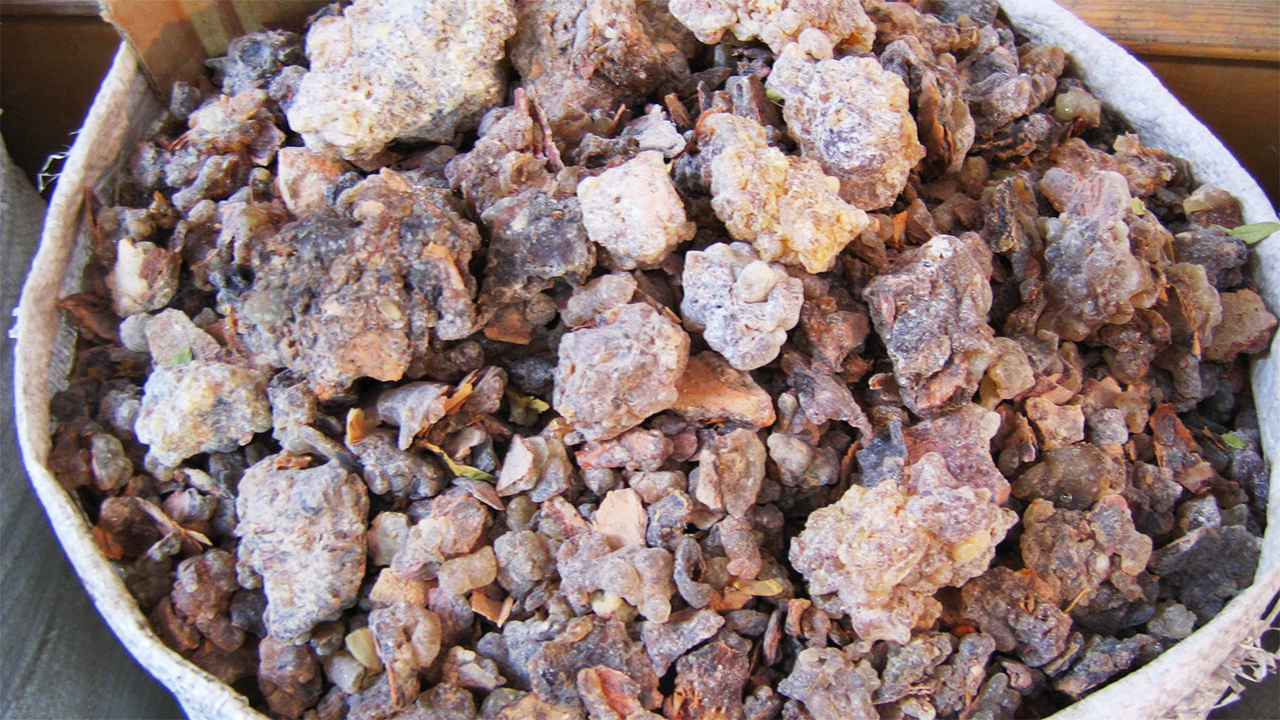Frankincense and myrrh, two of the most ancient and mystical resins, are derived from the sap of specific trees found in the arid regions of the Arabian Peninsula, East Africa, and India.
Frankincense comes from the Boswellia tree, particularly Boswellia sacra, which thrives in dry, mountainous regions.
When the tree’s bark is cut, it exudes a milky-white resin that hardens into aromatic gum known as frankincense.
This resin has been valued for thousands of years for its distinctive fragrance and is often used in religious and cultural ceremonies.
Myrrh, on the other hand, is sourced from the Commiphora myrrha tree, characterized by its knotted trunk and sparse branches.
Similar to frankincense, myrrh is produced by slicing the bark of the tree, from which a gum resin seeps out and eventually hardens.
This resin, darker and more viscous than frankincense, has a warm, earthy scent and has been historically used for medicinal purposes, as well as in perfumery and embalming.
Both these plants are not only remarkable for their aromatic resins but also for their resilience and ability to thrive in harsh, unforgiving environments.
Once abundant, frankincense is now threatened with near-extinction, as the trees that secrete the ancient resin have joined the international Red List of Threatened Species.
Why Frankincense And Myrrh Are So Expensive

About The Author
John Bagnasco has been in the gardening industry for over 50 years, starting with a horticulture degree from Michigan State University and following a stint at Frank’s Nursery and Crafts in Detroit.
After publishing his first book “Plants for the Home Vol. I” in 1976, he moved to California to become regional manager and buyer for the Nurseryland division of Sunbelt Nursery Group.
He then became the head buyer for Armstrong Garden Centers based in Glendora, California. John had a part-time affiliation with Creative Promotions for ten years before joining them full-time in October 2000 as a senior editor and radio personality for Garden Compass.
John has also taught horticulture classes at Palomar College and San Diego State University.
He is the host of the DVD “The Essential Guide to Roses,” which also features Bryan Main and Bruce and Sharon Asakawa.
His most recent book is “Planting Designs for Cacti and Succulents”.
Currently, John is a co-host on “Garden America,” an interactive live gardening show that additionally provides podcasts of the broadcasts accessible on all major platforms.
You can contact John here.

